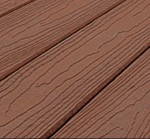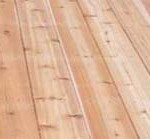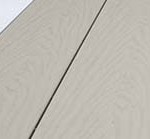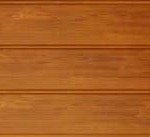Sennott Contractors Inc. is ready to provide you with a unique outdoor experience with the addition of a new deck to your home or commercial property. We offer a choice of materials that includes composite decking, cedar, treated pine, PVC, plastic, vinyl or aluminum materials. There are pros and cons to each type of material; see below for a brief description. We will make an onsite visit to your home or commercial property to provide a comprehensive evaluation. We take the time to personally review your needs and then will provide a detailed plan and itemized estimate.
We also specialize in deck repairs, additions to existing decks, and cleaning, sealing and/or staining with clear coats and/or color stains. Pressure washing is the most acceptable method of deck cleaning and our employees are trained extensively to know the correct amount of pressure to use so that no damage will occur to your decking during the cleaning process. Consistent maintenance of your deck will provide you with many enjoyable years of outdoor living.
Types of Deck Materials
You have the choice of several different materials for your new deck. Before determining the material choice, we will typically ask you the following questions: How long do you plan on owning your home? What is your planned budget for the construction? How much maintenance do you want to expend with your new deck? How will the placement of your deck be affected by sunlight?
Maintenance and budget are typically the predominant reasons behind a material choice. During the site visit, we will try to help you make a decision that is best for your family and your budget.
 Composite Materials– Materials such as Trex, Timbertech, etc. are decking materials made from a combination of plastic and wood. Composites have warranties typically from 15 – 50 years against splitting, warping, rotting, fading and staining, and are mold resistant. Composites have a natural wood grain finish and come in many rich colors, and do not need to be stained or sealed for their lifetime. While more expensive than wood, they maintain their appearance for many years and only require periodic cleaning with soap and water. The cost of composites is higher than other deck materials except aluminum.
Composite Materials– Materials such as Trex, Timbertech, etc. are decking materials made from a combination of plastic and wood. Composites have warranties typically from 15 – 50 years against splitting, warping, rotting, fading and staining, and are mold resistant. Composites have a natural wood grain finish and come in many rich colors, and do not need to be stained or sealed for their lifetime. While more expensive than wood, they maintain their appearance for many years and only require periodic cleaning with soap and water. The cost of composites is higher than other deck materials except aluminum.
 Western Redwood or Cedar and Pressure Treated Pine – If you are looking for real wood with the traditional natural feel, then these are the two choices: Western Red Cedar or Pressure Treated Pine. Cedar, while softer than pine, will maintain a nicer appearance with time than pressure treated pine. You will need to seal the deck every 2-3 years to maintain a decent appearance. Pressure treated pine is the least expensive decking material and is more durable than cedar, but also will require painting, staining and/or sealing to maintain. Both types of wood are easy to work with, are the most affordable to install, and are easily obtained in the marketplace. Several downsides to real wood are: the elements cause it to shrink, crack, and warp especially in high sunlight areas; excessive moisture causes rot and swelling; real woods splinter, and their use contributes to the loss of our forests. Additionally, real woods are prone to pest infestation and pressure treated pine is considered toxic if burned.
Western Redwood or Cedar and Pressure Treated Pine – If you are looking for real wood with the traditional natural feel, then these are the two choices: Western Red Cedar or Pressure Treated Pine. Cedar, while softer than pine, will maintain a nicer appearance with time than pressure treated pine. You will need to seal the deck every 2-3 years to maintain a decent appearance. Pressure treated pine is the least expensive decking material and is more durable than cedar, but also will require painting, staining and/or sealing to maintain. Both types of wood are easy to work with, are the most affordable to install, and are easily obtained in the marketplace. Several downsides to real wood are: the elements cause it to shrink, crack, and warp especially in high sunlight areas; excessive moisture causes rot and swelling; real woods splinter, and their use contributes to the loss of our forests. Additionally, real woods are prone to pest infestation and pressure treated pine is considered toxic if burned.
 PVC, Plastic and Vinyl – Unlike composites, these products are all plastic with no organic contents. They are low maintenance, stain, scratch and mold resistant and clean easily with soap and water. This decking has a finished look without painting and is offered in a wide variety of colors including light colors like white and beige. Unfortunately, plastics are more prone to expansion and contraction in the heat/cold, and are typically a little more slippery than composites/wood decks when wet. They have a tendency to squeak and get chalky in appearance.
PVC, Plastic and Vinyl – Unlike composites, these products are all plastic with no organic contents. They are low maintenance, stain, scratch and mold resistant and clean easily with soap and water. This decking has a finished look without painting and is offered in a wide variety of colors including light colors like white and beige. Unfortunately, plastics are more prone to expansion and contraction in the heat/cold, and are typically a little more slippery than composites/wood decks when wet. They have a tendency to squeak and get chalky in appearance.
 Aluminum – Aluminum is the ultimate decking material if you are considering both durability and maintenance. Aluminum is resistant to rot, mildew, cracking and warping. It will not catch on fire nor be susceptible to pest infestation. It is lighter and stronger than most other materials and can be cut with regular carbide-tipped saws. The major drawback to an aluminum deck is that it is the most expensive material to purchase.
Aluminum – Aluminum is the ultimate decking material if you are considering both durability and maintenance. Aluminum is resistant to rot, mildew, cracking and warping. It will not catch on fire nor be susceptible to pest infestation. It is lighter and stronger than most other materials and can be cut with regular carbide-tipped saws. The major drawback to an aluminum deck is that it is the most expensive material to purchase.
Further questions and concerns can be discussed during the onsite inspection.


